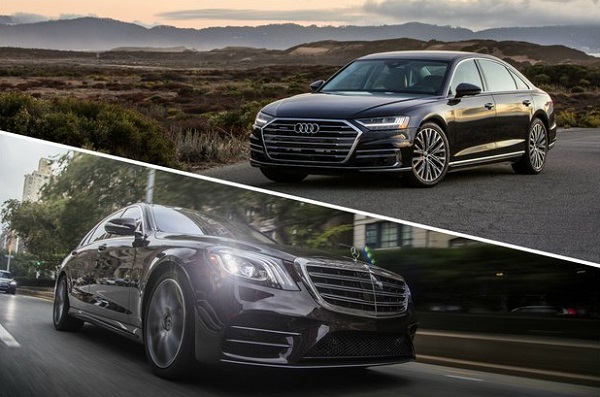Toyota vs. Mazda: Which Car Brand Is Better?
Which is the best brand, Toyota or Mazda? Consumer Reports recently updated its list of the most trusted car brands with Mazda leading the way. Consumer Reports reliability ratings demonstrate how well vehicles have lasted and the likelihood that owners will experience an increase in problems and repairs. Essentially, Mazda has become the most trusted brand by sticking to the same formula.
Consumer Reports gave Mazda an overall model score of 83. Toyota and Lexus rank second and third with scores of 74 and 71, respectively. These automakers outperform most because of their conventional way of building cars. They are among the most cautious about redesigns of their models and the launch of new products.

Toyota VS Mazda Car Comparison
Divided between the Toyota Corolla and the Mazda 3? Toyota Avalon and Mazda 6? Here’s a close model comparison between these two automakers.
Comparing and analyzing vehicles for purchase can be a daunting task. With hundreds of car manufacturers and models to choose from, the disposal process could take weeks, even months.
Several web-based tools are available to make the procedure a bit easier. JD Power is a company that evaluates the similarities and differences between vehicles based on their performance, features, price and much more, and serves as valuable information for potential buyers.
According to Autotrader, there are seven essential criteria for evaluating a car before making a purchase. These include performance, functionality, safety, fuel economy, appearance, and cost, though not necessarily in that order.
Read Also: Toyota vs. Honda: Which Car Brand Is Better?
Ideally, the elimination process will come to the point of choosing between just two high-quality automakers. A simple comparison of the models offered by each company in the category of interest is all that is left to make an informed decision.
Here’s a side-by-side comparison of Mazda and Toyota cars by model type.
Mazda3 VS Toyota Corolla Hatchback
In 2019, the Mazda3 and Toyota Corolla were two of the newest small hatchbacks on the market, each with substantially more cargo area than corresponding sedans.
Cargo Capacity: The Mazda 3 hatchback has 20.1 cubic feet of space versus 13.2 cubic feet for the sedan. The Corolla hatchback has a cargo hold that measures 18 cubic feet behind its rear seats, which is 4.9 cubic feet more than the sedan.
Driving: Front-wheel drive is standard on both. However, the Mazda 3 also offers an all-wheel-drive powertrain.
Mazda now offers a more flexible ride than previous models, while maintaining its sporty driving dynamics. The Corolla also offers a tightly controlled demeanor, but it’s no match for the Mazda3’s handling prowess.
Mazda3 VS Toyota Corolla
Powertrain: The Mazda3 is offered only with a 2.5L I-4 producing 186 hp and 186 pound-feet of torque mated to a six-speed automatic transmission. Toyota offers the Corolla with a 2.0L engine with 169 hp and 151 lb-ft mated to a CVT.
Handling: Corolla’s multi-link rear suspension easily eliminates road imperfections, while the Mazda3 does the opposite. Motor Trend notes: “On the worst streets in Los Angeles, the Mazda3’s suspension crashes violently, sending a nasty jolt into the cabin and causing a loud explosion on contact.”
Interior: Touch buttons, luxurious surfaces, and a two-tone color scheme give the Mazda3’s cabin a premium feel. Toyota cut costs in Corolla’s backseat area.
Technology: Neither Mazda nor Toyota installs class-leading multimedia systems in any of their vehicles. The Mazda3 and Corolla are no exceptions.
Mazda3 Hatchback VS Toyota Prius
Perhaps the most obvious difference between the Mazda3 Hatchback and the Toyota Prius is fuel economy. The Mazda3 gets a respectable 30 combined mpg city/highway. But the hybrid Prius has a combined fuel efficiency of 56 mph. CO2 emissions per 15,000 miles per year are much lower for the Prius at 3.1 tons per year versus 5.9 tons per year for the Mazda.
Both vehicles seat five passengers, but the Prius offers 27.4 ft³ of cargo space compared to 20.1 ft³ for the Mazda with the rear seat raised. Only the Mazda3 can lower the rear seat to give you 47.1 cubic feet of volume.
Safety features abound on both cars, but the winner is the Mazda, which offers Cross Traffic Alert and Blind Spot Monitor, not available on the Prius.
Mazda 6 VS Toyota Avalon
Powertrain: The Avalon is equipped with a 3.5-liter DOHC V6 that makes 114 more horsepower (301 vs. 187) and 81 pound-feet more torque (267 vs 186) than the Mazda 6’s standard 2.5-liter DOHC 4-cylinder engine.
Handling: The Avalon’s wheelbase is longer than the Mazda 6 at 113 inches versus 111.4 inches, respectively. The Avalon’s width between the wheels is 0.2 inches wider at the front and 1.3 inches wider at the rear than the Mazda 6’s average track measurement. Both combine to give the Avalon superior ride and handling characteristics.
Reliability: JD Power and Associates’ 2018 Three-Year Vehicle Owner Survey shows Toyota outperformed Mazda in reliability. The study ranks Toyota above the industry average for reliability, in the eighth position, while Mazda is in 14th place.
Mazda 5 VS Toyota Sienna
The Mazda 5 was introduced in 2006 and was produced until 2015 as a compact, spacious, and feature-rich minivan that compares well to the Toyota Sienna. The Mazda was powered by a 2.3L inline four-cylinder engine that produced 157 horsepower.
The Toyota Sienna featured a larger cabin than the Mazda 5, a more powerful V6 engine, came standard with front-wheel drive but offered an optional all-wheel drive.
Mazda decided not to bring back the Mazda5 for the 2016 model year due to declining sales. The Mazda minivan felt competition from SUVs and crossovers, as did minivans from other manufacturers. Mazda decided to focus on improving the other models in its line.
Read Also: Nissan vs. Honda: Which Car Brand Is Better?
Mazda B Series VS Toyota Tacoma
The last generation of the Mazda B-series pickup was a rebranded Ford Ranger produced between 2001 and 2009 and powered by a 2.3-liter Inline-4. The Toyota Tacoma is equipped with a 2.7-liter Inline-4 engine that produces 159 hp at 5200 rpm and 180 pound-feet of torque at 3800 rpm. Both trucks send power to the rear wheels.
The Mazda B is a two-seater, while the Tacoma seats four passengers. Both trucks get the same fuel economy of about 23 mpg. A new Tacoma is available for purchase in 2021, while a buyer looking for the Mazda B will have to settle for buying a used car since it is discontinued.







